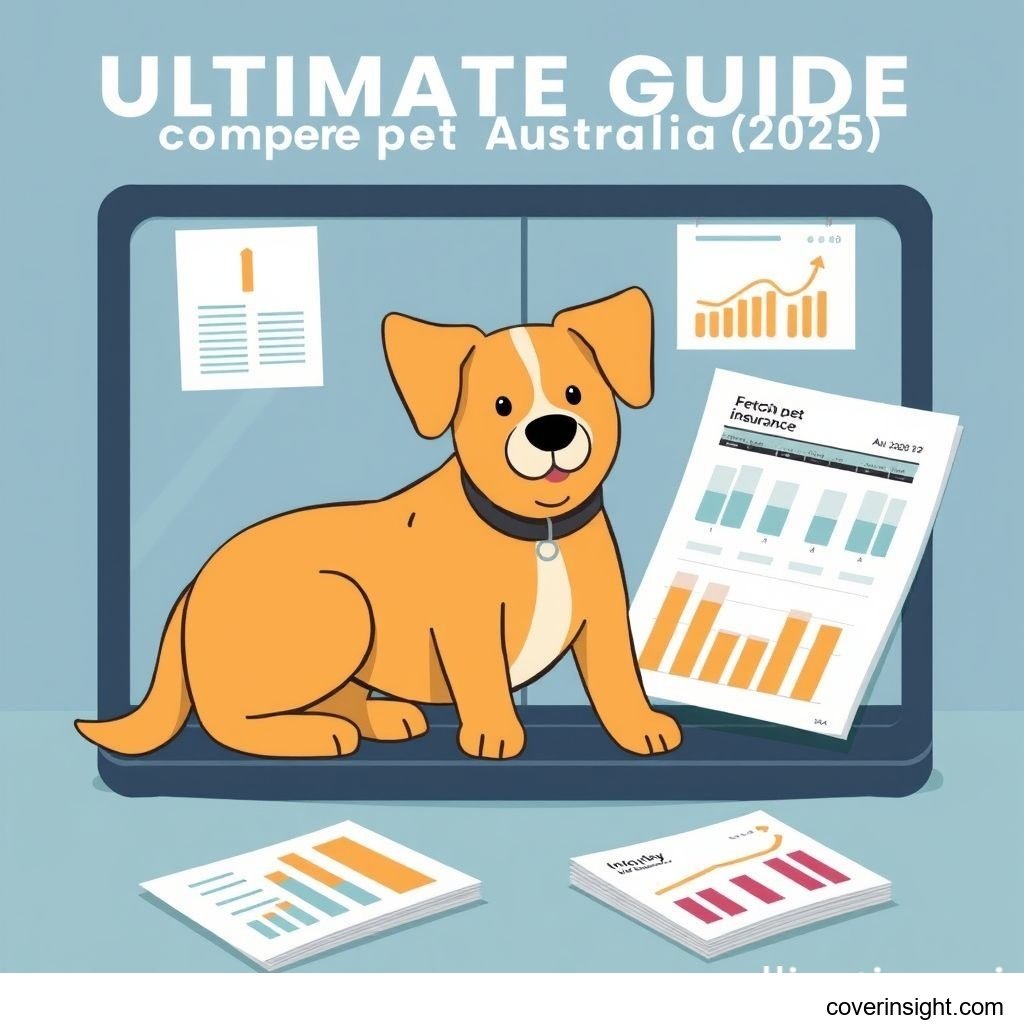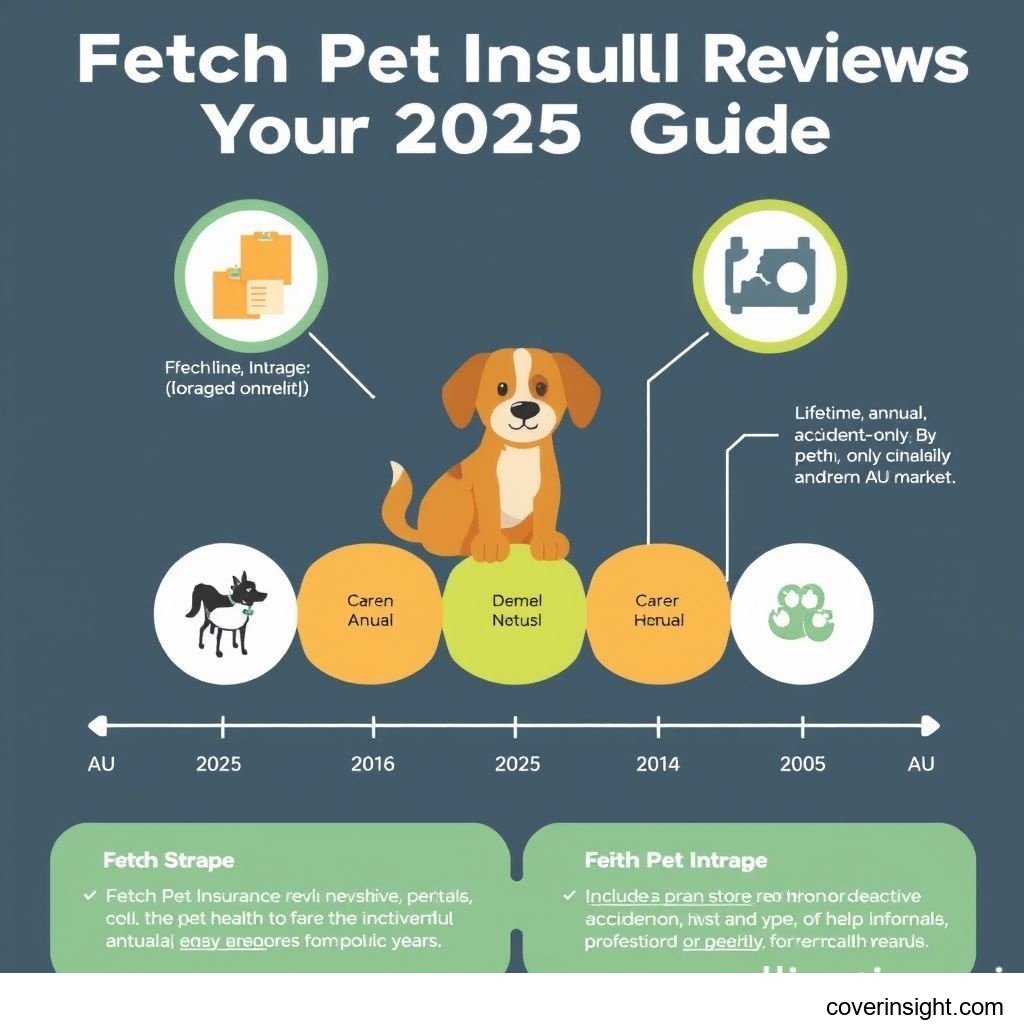Introduction: Navigating Fetch Pet Insurance Reviews in Australia 2025
Understanding the landscape of pet insurance in Australia is crucial for every pet owner. As we step into 2025, the demand for comprehensive yet affordable pet coverage continues to grow. This guide aims to provide an ultimate comparison, deeply exploring fetch pet insurance reviews and other key aspects to help you make an informed decision. With rising veterinary costs, having the right policy can protect your furry family members without breaking the bank. Our focus here is to unpack the intricacies of various plans, highlighting what pet parents in AU need to consider when looking at different options, including detailed fetch pet insurance reviews.
Coverage Details for Pet Insurance Plans
When evaluating pet insurance, the specifics of what is covered – and what isn't – are paramount. Many policies vary significantly in their offerings, making it essential to scrutinize the fine print.
What’s Included in Pet Insurance Policies
Most comprehensive pet insurance policies typically cover a range of unexpected events and illnesses. This can include:
-
Accidents: Injuries from falls, car accidents, snake bites, or broken bones.
-
Illnesses: Diagnosis and treatment of conditions such as cancer, diabetes, arthritis, or infections.
-
Emergency Care: Hospitalisation, surgery, and after-hours veterinary services.
-
Diagnostic Tests: X-rays, MRI scans, blood tests, and ultrasounds.
-
Prescription Medications: Drugs administered for covered conditions.
-
Non-surgical procedures: Endoscopies or colonoscopies.
Some premium plans might also offer limited routine care benefits, though this is less common with basic accident and illness policies. For those examining fetch pet insurance reviews, it's important to check their Product Disclosure Statement (PDS) for a precise list of inclusions, as offerings can change year-on-year.
Common Exclusions to Be Aware Of
Understanding exclusions is just as important as knowing what’s covered. Common exclusions across the industry include:
-
Pre-existing Conditions: Any illness or injury that your pet showed signs of before the policy started or during a waiting period. This is a critical factor in all fetch pet insurance reviews.
-
Elective Procedures: Cosmetic surgeries or procedures not medically necessary, like declawing or tail docking.
-
Routine/Preventative Care: Vaccinations, flea/tick/worming treatments, annual check-ups, and desexing are often not covered by standard accident/illness policies unless explicitly purchased as an add-on.
-
Behavioural Problems: While some severe cases might be covered, mild behavioural issues often are not.
-
Breeding/Pregnancy: Costs associated with pregnancy, birth, or breeding are typically excluded.
-
Specific Conditions: Some policies might exclude certain hereditary or congenital conditions, especially if the breed is predisposed to them.
Always read the PDS thoroughly to identify specific exclusions. This due diligence is highlighted in many fetch pet insurance reviews as essential for managing expectations.
Cost Analysis and Premiums for Fetch Pet Insurance Reviews
The cost of pet insurance is a major deciding factor for most Australian pet owners. Understanding how premiums are calculated and how you can manage them is vital.
Price Factors Influencing Your Premium
Several factors contribute to the overall premium you'll pay for pet insurance:
-
Pet's Breed: Purebreds, especially those predisposed to certain genetic conditions, often have higher premiums.
-
Pet's Age: Younger pets are generally cheaper to insure, with premiums increasing significantly as pets age due to higher health risks.
-
Location: Veterinary costs vary by postcode, influencing insurance premiums.
-
Species: Cats are typically less expensive to insure than dogs.
-
Type of Policy: Accident-only policies are the cheapest, followed by accident and illness, with comprehensive plans being the most expensive.
-
Chosen Excess/Deductible: A higher excess (the amount you pay first on a claim) usually results in a lower monthly premium.
-
Reimbursement Rate: Opting for a lower reimbursement rate (e.g., 70% instead of 90%) can reduce premiums.
When reading fetch pet insurance reviews, you'll often find discussions about their pricing structure and how these factors apply. It’s worth noting that what might be affordable for one pet could be vastly different for another.
Saving Tips and Discount Opportunities
While pet insurance is an investment, there are ways to make it more affordable:
-
Compare Quotes: Always shop around and compare policies from multiple providers. Websites like ours can help you with this.
-
Choose a Higher Excess: If you have an emergency fund, a higher excess can lower your monthly payments.
-
Multi-Pet Discounts: Many insurers offer discounts if you insure more than one pet.
-
Online Sign-Up Discounts: Some providers offer initial discounts for purchasing online.
-
Annual Payments: Paying annually instead of monthly can sometimes result in a small saving.
-
Review Your Policy Annually: As your pet ages, their needs change, and so might your policy. Review it to ensure you're not over-insured or under-insured.
For comprehensive insights, examining various fetch pet insurance reviews for their discount offerings or partnership benefits can also reveal cost-saving opportunities.
Choosing the Right Policy: Lifetime vs Annual Options
One of the most critical distinctions in pet insurance, and a frequent topic in fetch pet insurance reviews, is the choice between lifetime and annual policies. This decision significantly impacts your pet's long-term coverage.
Lifetime vs. Annual Policies Explained
Understanding the nuances of lifetime vs annual policies is fundamental:
-
Lifetime Policies: These policies are generally considered the gold standard. They cover chronic conditions (like diabetes or arthritis) throughout your pet's life, as long as you renew the policy each year. Once a condition is diagnosed and covered, it remains covered in subsequent policy years (subject to annual limits and policy terms). This continuity of care is a major advantage, especially for older pets or those with ongoing health issues. This is a key differentiator when comparing fetch pet insurance reviews against competitors.
-
Annual Policies (or "Per-Condition" policies): These policies reset annually. If your pet develops a chronic condition, it might only be covered for a specific period (e.g., 12 months) from the first treatment date, or up to a specific financial limit for that condition, after which it becomes a "pre-existing condition" for future policy years. This means long-term care for chronic illnesses might not be continuously covered. They are often cheaper initially but can become more expensive over your pet's lifetime if chronic conditions arise.
The choice between lifetime vs annual policies depends on your budget, your pet's health status, and your comfort level with potential future out-of-pocket expenses.
Considering Dental Care Coverage
Dental care coverage is another area that varies widely among policies and is a significant point of comparison in fetch pet insurance reviews. Oral health is often overlooked but crucial for a pet's overall well-being.
-
Limited Dental Coverage: Some basic policies might only cover dental work resulting from an accident (e.g., a broken tooth from trauma).
-
Comprehensive Dental Coverage: More robust plans might offer coverage for dental illnesses like gingivitis, periodontal disease, and necessary dental procedures like extractions (often with specific waiting periods or annual limits). This can be an add-on benefit or included in premium packages.
-
Routine Dental Exclusions: Most policies, even those with dental illness coverage, typically exclude routine dental cleanings, scaling, and polishing unless they are part of a wellness package.
If dental care coverage is important to you, explicitly check the PDS of any policy you consider. Some fetch pet insurance reviews might highlight their specific approach to dental health, which can be a deciding factor for many pet owners.
Claims Process and Customer Service for Fetch Pet Insurance Reviews
The efficiency of a claims process and the quality of customer service are critical indicators of an insurance provider's reliability. These aspects are frequently discussed in fetch pet insurance reviews.
Understanding the Claims Process
A smooth claims process is essential for reducing stress during an already difficult time. Typically, the process involves:
-
Vet Visit: Your pet receives veterinary treatment.
-
Payment: You pay your vet bill in full at the time of treatment.
-
Claim Submission: You submit a claim form (often online or via an app) along with itemised invoices from your vet.
-
Assessment: The insurer reviews your claim. This might involve contacting your vet for medical history.
-
Reimbursement: If approved, the insurer reimburses you based on your policy's reimbursement rate (e.g., 80% or 90%) after your excess is applied.
Some insurers now offer "gap payments" or "direct payments" to vets, meaning they pay their share directly to the vet, reducing your upfront cost. It's advisable to check if this is an option when reviewing fetch pet insurance reviews. Speedy processing times and clear communication channels are key elements pet owners look for.
Customer Service and Support
Good customer service can make a significant difference. Aspects to consider include:
-
Availability: Are customer service representatives easily reachable by phone, email, or live chat?
-
Responsiveness: How quickly do they respond to queries and process claims?
-
Helpfulness: Are they knowledgeable, empathetic, and clear in their explanations?
-
Online Tools: Does the insurer offer a user-friendly online portal or mobile app for managing policies and submitting claims?
Positive feedback regarding customer service often features prominently in positive fetch pet insurance reviews, highlighting an insurer's commitment to their policyholders during stressful times.
Frequently Asked Questions About Fetch Pet Insurance Reviews
This section addresses common queries related to pet insurance in Australia, with a focus on insights from fetch pet insurance reviews.
How Much Does Fetch Pet Insurance Reviews Cost?
The cost of fetch pet insurance reviews varies widely depending on several factors including your pet's breed, age, location, and the specific policy level you choose (e.g., accident-only, accident and illness, or comprehensive). Premiums can range from as little as $20 per month for basic coverage on a young, small cat to over $100 per month for a large, older dog with a comprehensive plan. To get an accurate figure for fetch pet insurance reviews, it’s always best to obtain a personalised quote directly from Fetch or a comparison site.
What Affects Pet Insurance Premiums?
Beyond the provider-specific nuances found in fetch pet insurance reviews, general factors affecting premiums include:
-
Pet's breed: Breeds prone to certain health issues (e.g., hip dysplasia in large dogs) often have higher premiums.
-
Pet's age: Premiums increase with age due to higher health risks.
-
Geographic location: Vet costs vary, impacting insurance prices.
-
Policy type: Comprehensive plans are more expensive than accident-only.
-
Chosen excess: A higher excess reduces your premium.
-
Reimbursement rate: A lower reimbursement rate (e.g., 70% instead of 90%) results in a lower premium.
Is Pet Insurance Mandatory in Australia?
No, pet insurance is not mandatory in Australia. It is a voluntary choice for pet owners to help manage the financial burden of unexpected veterinary costs. While not legally required, many consider it a wise investment, especially given the rising costs of advanced veterinary care. Decision-making is often influenced by personal financial situations and an assessment of potential risks, with fetch pet insurance reviews often helping guide this consideration.
How to Choose the Best Pet Insurance Policy?
Choosing the best pet insurance policy involves careful consideration of your pet's needs and your budget. Here’s a checklist:
-
Assess your pet’s needs: Consider their breed, age, and potential health risks.
-
Determine your budget: How much can you comfortably afford monthly or annually?
-
Compare different providers and policies: Look beyond just price; examine coverage limits, excesses, and reimbursement rates. Many turn to detailed fetch pet insurance reviews for an initial assessment.
-
Read the Product Disclosure Statement (PDS): Understand exclusions, waiting periods, and benefit limits.
-
Check for pre-existing conditions: Ensure any existing conditions won't render the policy useless.
-
Evaluate customer service and claims process efficiency.
For a deeper dive into options, exploring reliable insurance resources global can provide a broader perspective on policy types.
Consequences of No Pet Insurance Coverage?
Opting for no pet insurance coverage means you are solely responsible for 100% of your pet's veterinary bills. The consequences can include:
-
Significant out-of-pocket expenses: A single serious accident or illness can cost thousands of dollars, potentially leading to financial strain.
-
Difficult decisions: Without insurance, owners might face the heartbreaking choice between expensive, life-saving treatment and euthanasia if they cannot afford the vet bill.
-
Delayed treatment: Financial constraints might lead to delaying necessary veterinary care, potentially worsening a pet's condition.
Many fetch pet insurance reviews highlight how coverage offers peace of mind, allowing owners to focus on their pet's recovery rather than the financial implications. The Australian Prudential Regulation Authority provides oversight of financial institutions, ensuring consumer protection in the broader insurance market, while the Insurance Council of Australia offers resources on general insurance principles. For pet owners in AU, researching and securing appropriate coverage is an important step in responsible pet ownership. For more specific information on Australian insurance, visit AU insurance home.








Comments